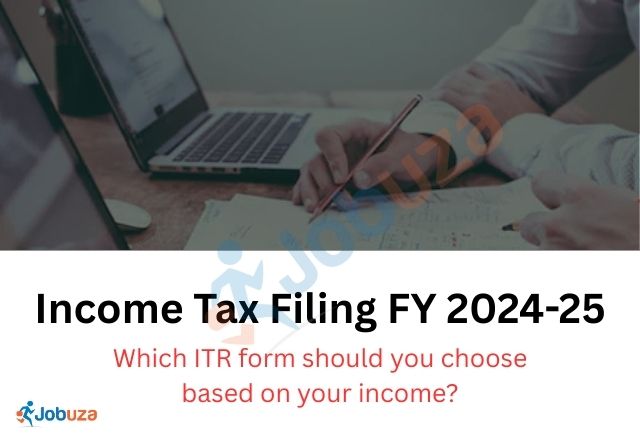Income Tax Return Filing FY 2024-25: Last Date, ITR Form Guide & Common Mistakes to Avoid
The Income Tax Department has extended the deadline for filing Income Tax Returns (ITR) for the Financial Year 2024-25. Taxpayers now have time until 15th September 2025, instead of the earlier due date of 31st July 2025. This extension gives individuals and businesses additional time to gather and file their income details without rushing.
As of early August, more than 2.51 crore ITRs have already been filed, out of which 2.43 crore have been verified and 1.13 crore processed. With only a few weeks remaining, it’s crucial to choose the correct ITR form and file your return on time to avoid penalties or delays in refunds.
Which ITR Form Should You Use?
Selecting the right ITR form depends on your income source and category (individual, HUF, firm, etc.). Filing the wrong form can lead to rejection or delay in processing. Here’s a simple breakdown:
ITR-1 (Sahaj)
-
For resident individuals with total income up to ₹50 lakh.
-
Income from salary, one house property, and other sources like interest.
-
Not applicable for capital gains, lottery income, or foreign assets.
ITR-2
-
For individuals and Hindu Undivided Families (HUFs) not having income from business or profession.
-
Covers capital gains, multiple house properties, and foreign assets.
ITR-3
-
For individuals and HUFs with income from business or profession.
-
Also includes partners in firms and freelancers/consultants not under presumptive taxation.
ITR-4 (Sugam)
-
For resident individuals, HUFs, and firms (excluding LLPs) with income up to ₹50 lakh.
-
Applies to those under the presumptive taxation scheme under sections 44AD, 44ADA, or 44AE.
ITR-5
-
For partnership firms, LLPs, AOPs, BOIs, societies, and trusts.
-
Includes reporting for MSMEs, startups, and digital assets like cryptocurrency.
ITR-6
-
For companies (except those claiming exemption as charitable or religious trusts under section 11).
ITR-7
-
For entities such as charitable/religious trusts, political parties, research associations, etc., required to file under section 139(4A) to 139(4F).
Step-by-Step: How to File ITR Online for FY 2024-25
-
Log in to the official Income Tax e-filing portal using your PAN and password.
-
Choose the correct ITR form based on your income and profile.
-
Fill in or import details via the Excel or JSON utility.
-
Validate and preview all fields to ensure accuracy.
-
E-verify your return using Aadhaar OTP, net banking, or other methods.
Note: E-verification is mandatory. Without it, your return will be considered incomplete.
Documents to Check Before Filing
-
Form 26AS
-
Annual Information Statement (AIS)
-
Bank statements
-
TDS certificates
-
Investment proofs
-
Details of exempt income like PPF, agriculture income, etc.
Common Mistakes That Can Delay Refunds or Invite Notices
Avoid these frequent errors:
-
Incorrect bank account details.
-
Mismatch in TDS data or income declared.
-
Not reporting exempt income like interest from PPF or agricultural earnings.
-
Ignoring discrepancies in Form 26AS and AIS.
-
Missing the e-verification step after filing.
Final Tips for Hassle-Free Filing
-
Use the latest version of the ITR utilities.
-
Reconcile all income and TDS data.
-
Consider professional help if your income sources are complex.
-
File early to avoid last-minute server issues or mistakes.
-
Keep acknowledgment and e-verification confirmation for records.
Stay informed, stay compliant. Filing the correct ITR form not only helps avoid penalties but also ensures faster processing of your refund. Always cross-check financial data and documents before submission.
For more personal finance insights and tax updates, stay connected.
Disclaimer: This article is for general informational purposes only. Please consult a qualified tax professional or refer to the official Income Tax Department website for personalized advice before filing your return.



